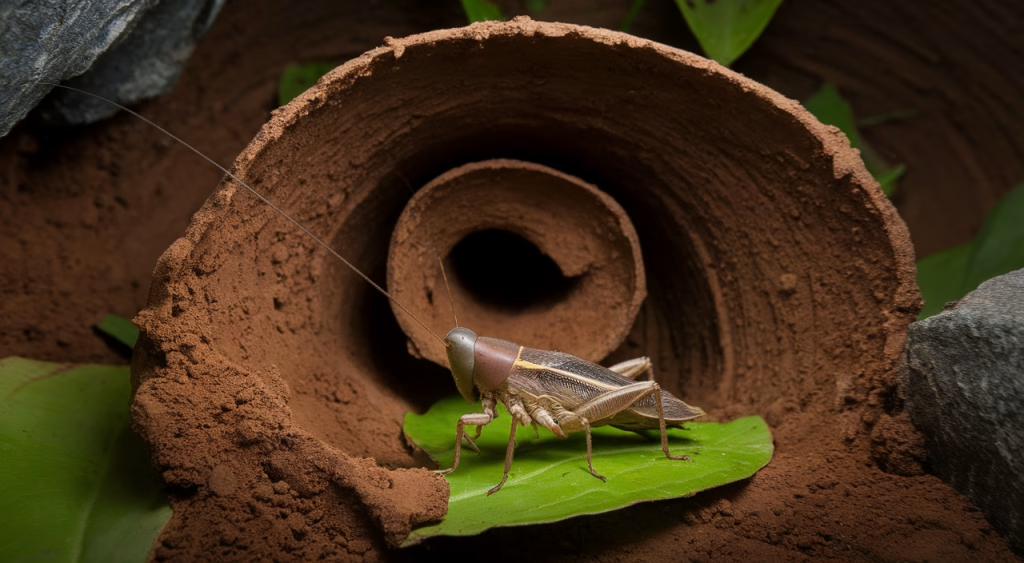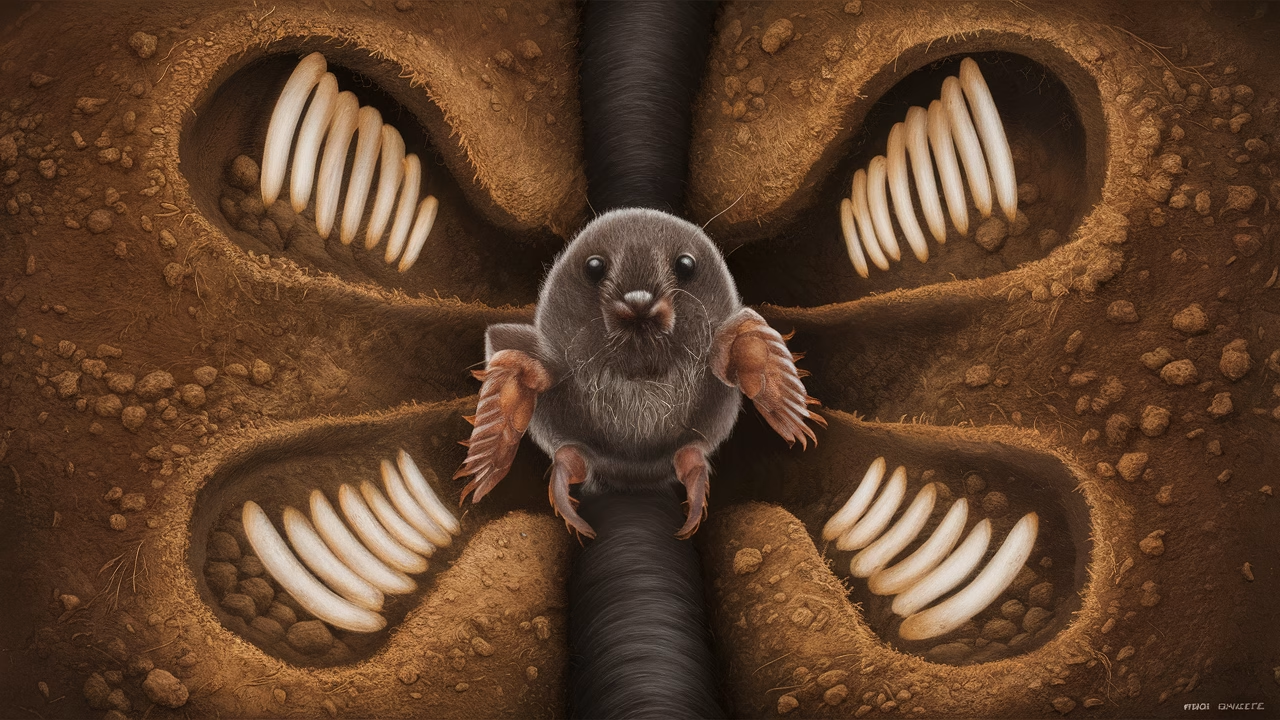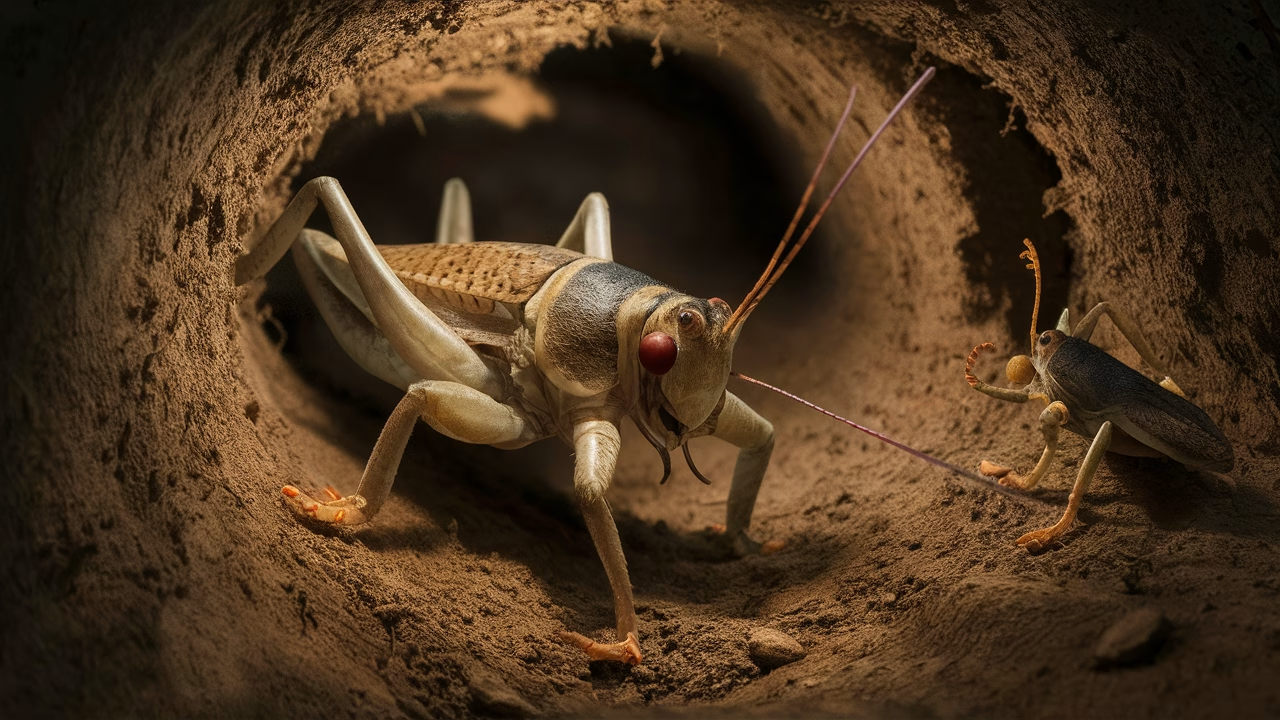How do mole crickets amplify their love calls?
Male mole crickets amplify their love calls by constructing acoustically optimized burrows in the soil. These specialized calling burrows function like megaphones, enhancing the reach and intensity of their mating chirps to attract females from greater distances.
TL;DR: How Mole Crickets Become Underground Acoustic Engineers
- Mole cricket love calls are amplified using specially shaped burrows acting like natural speakers.
- These “calling burrows” are carefully constructed by male mole crickets using their forelimbs.
- Female mole crickets are drawn to louder, clearer calls, often traveling several meters underground to reach the source.
- The science of mole cricket calls reveals an astonishing natural example of bioacoustics and evolution at play.
- Understanding their behavior helps in fields like pest control, conservation, and bio-inspired sound technologies.
How Mole Cricket Calling Burrows Amplify Love Calls
Ever tried yelling into a tunnel or cone to make your voice louder? That’s exactly what mole crickets do—but with evolutionary precision that puts human engineering to shame.
Male mole crickets, especially the southern mole cricket (Scapteriscus acletus), construct Y-shaped calling burrows just below the soil surface. These burrows aren’t randomly shaped—they’re acoustic marvels designed to optimize sound resonance. When a male begins his mole cricket love calls, he positions himself in the rear chamber while the two front openings function like a trumpet’s bell, projecting his song outward.
This clever burrow design increases both volume and directional focus, giving mole cricket love calls the power to travel up to 30 meters in ideal conditions—a remarkable feat for an insect barely the length of a paperclip.
| Burrow Feature | Function |
|---|---|
| Y-shape structure | Facilitates directional sound projection |
| Bulbous rear chamber | Resonance chamber boosts volume |
| Dual front openings | Broadens sound dispersion |
In lab studies, mole crickets using their calling burrows were observed to call up to 10x louder than on flat ground. This amplified call system is an evolutionary masterpiece—louder calls reach more females, dramatically increasing reproductive success.
Mole Cricket Mating Behavior: Engineering Romance Underground
Mole cricket mating behavior may not involve flowers and dances, but it’s no less sophisticated. Each evening during breeding season, males construct fresh calling burrows. They often modify these acoustic chambers nightly, fine-tuning what delivers the best sound projection.
Once they’ve engineered the perfect acoustic stage, males produce their mole cricket love calls by rubbing their forewings together in rhythmic stridulation—a sound humans might compare to a miniature chainsaw or purring cat. This is their siren song, broadcast exclusively for female ears.
Like singers perfecting their pitch, mole crickets adjust their calling based on environmental feedback. Research shows they respond to humidity levels, soil density, and ambient background noise. This acoustic tuning significantly improves their chances of attracting receptive mates through their calling burrows.
When a female is interested, she navigates underground using the sound gradient as her guide. Female mole crickets consistently prefer males with louder, more resonant calls—a trait directly influenced by how expertly their calling burrows are constructed.
Female Attraction to Mole Crickets: The Science of Underground Romance
Why do female mole crickets respond so strongly to amplified calls from calling burrows? The answer combines evolutionary biology with acoustic physics in fascinating ways.
Louder, clearer mole cricket love calls signal a male’s physical health, engineering skill, and territory dominance. Just as rich bird songs indicate a healthy male, resonant calls from well-designed calling burrows suggest the singer was strong and intelligent enough to build an efficient acoustic system—making him an attractive potential mate.
Female mole crickets possess specialized tympanic organs on their front legs—similar to our ears—that are precisely tuned to detect male stridulation frequencies. Amplified calls from calling burrows are simply easier for females to recognize and follow through environmental noise.
Female attraction to mole crickets operates through phonotaxis: they navigate toward sound sources, often digging side passages or using surface cues when necessary. Scientific experiments consistently show female mole crickets choose males with stronger acoustic signals from superior calling burrows.
The Science of Mole Cricket Calls: Bioacoustic Engineering
The science of mole cricket calls encompasses bioacoustics, evolutionary biology, and soil mechanics. Researchers use ultrasonic microphones, vibration detectors, and 3D-printed burrow models to analyze how soundwaves travel through different soil types and calling burrows.
One fascinating discovery: the acoustic impedance of calling burrows—how easily sound waves travel through them—depends heavily on smoothness, shape, and humidity. Males that optimize these elements in their calling burrows produce stronger, farther-reaching mole cricket love calls.
This knowledge has practical applications beyond understanding mole cricket mating behavior. Acoustic traps could revolutionize pest control by recording perfect love calls and playing them through underground speakers to lure mole crickets away from crops.
Conservationists also use the science of mole cricket calls as population indicators. Increased calling activity often signals habitat recovery or peak breeding readiness.
| Sound Design Element | Impact on Calling Effectiveness |
|---|---|
| Burrow symmetry | Enhances consistency in vibration |
| Entrance tilt angle | Projects sound upward/outward more effectively |
| Soil moisture | High moisture carries sound farther |
Final Thoughts: The Unsung Engineers Beneath Our Feet
Mole crickets aren’t just burrowers—they’re bioacoustic engineers, passionate singers, and evolutionary innovators. From crafting resonant calling burrows beneath the soil to orchestrating nightly performances of mole cricket love calls designed to attract mates, they reveal how complex and intentional nature can be—even beneath our feet.
Understanding mole cricket mating behavior and the science of mole cricket calls helps us appreciate the intricate connections between sound, habitat, and reproduction in even the smallest creatures. Whether you’re studying insect communication or simply marveling at their ingenuity, remember this: every summer chirp beneath your feet might be part of an elaborate romantic symphony performed in perfectly engineered calling burrows.
Frequently Asked Questions
- Why do mole crickets dig?
They dig to create calling burrows that amplify their love songs and to build stable tunnels for habitat and navigation. - How do mole crickets make sound?
They create sound by rubbing their forewings together, a process known as stridulation. - What attracts female mole crickets?
Loud and resonant calls from well-constructed burrows typically attract females. - Can mole crickets damage soil or vegetation?
Yes, especially species like the tawny mole cricket can uproot plants as they tunnel. - How far can a mole cricket’s call travel?
Depending on soil conditions and burrow quality, up to 30 meters has been recorded. - When are mole crickets most active?
They are most active at dusk and during breeding seasons, around spring and early summer. - Do all species of mole crickets use calling burrows?
Only some species engage in calling behavior; others use alternative mating strategies.





